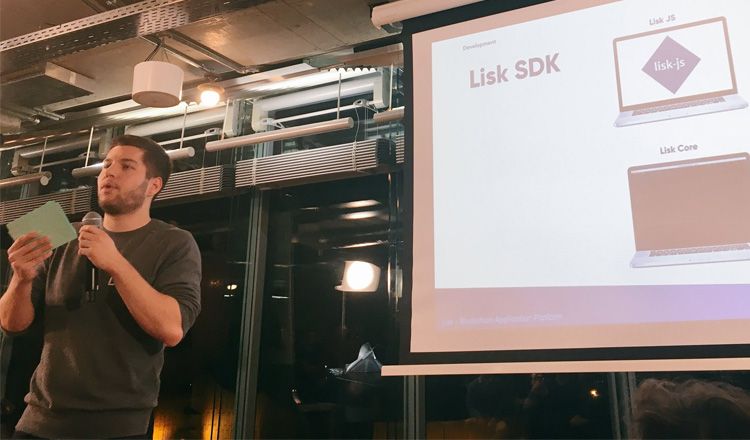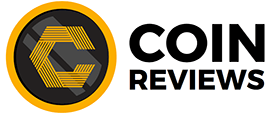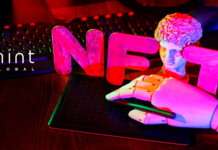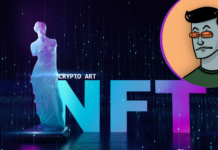![]()
It’s difficult to talk about Lisk without talking about Ethereum. Like Bitcoin in the world of currency, Ethereum is the first-mover and favorite in the world of blockchain application platforms. But like Bitcoin, Ethereum has younger competitors vying for the crown of being the world’s best blockchain app platform, and one of those competitors is Lisk.
What’s Different About Lisk?
A bit like China’s NEO, one of Lisk’s primary selling points is that it’s an easier platform for developers to work with than Ethereum. To write a distributed application (dApp) for the Ethereuem blockchain, developers need to learn Ethereum’s custom programming language (which is called Solidity). Lisk developers can work in JavaScript, a programming language most software developers already know, and Lisk claims on its website that it puts special focus on documentation and developer support. Its goal is to offer a more developer-friendly app development environment.
This focus on developer support and user experience is also reflected in a couple of Lisk’s other unique features. First, Lisk is a platform for what it calls “distributed applications” rather than “smart contracts.” That terminology can be a little confusing because Ethereum’s smart-contract applications are also often called distributed applications, but there is a distinction. A smart contract typically contains only the back-end of an application, and sometimes only part of that.
The front-end (what a user actually sees) and elements of the back-end are often run outside of the actual blockchain. A distributed application – by Lisk’s definition of that term – is entirely on the blockchain. That means that developers for Lisk can run their apps entirely via the Lisk network, without needing to rely on any third-parties for front-end support or additional back-end computing.
The bottom line of all of this is that developers can build entire blockchain applications using Lisk’s SDK, including the app’s entire back-end, its user-facing front end, and its unique and fully-featured blockchain (in the form of a Lisk sidechain), including its own consensus algorithm and (if the developers desire) its own unique crypto token.
Lisk also features its own “app store” of sorts – every Lisk application will be listed and downloadable from a directory in the Lisk client.
Delegated Proof-of-Stake
Like many next-gen blockchain projects, Lisk also sets itself apart from crypto market leaders like Bitcoin and Ethereum by eschewing power-hungry proof-of-work consensus (i.e. mining) in favor of a proof-of-stake system. In Lisk’s case, it’s delegated proof-of-stake, which means that stakeholders – anyone who owns the LSK token – can vote for delegate accounts to represent them on the Lisk network. The top 101 delegate accounts are activated and achieve consensus, generating blocks in the chain. After each of the 101 delegates has generated a block, the cycle begins again.
This system works because it means that to insert false information into the Lisk chain, a bad actor would need to hold enough LSK tokens to control the votes of at least 51 delegates, which would be prohibitively expensive.
Although there’s no mining in the traditional sense, active delegates do receive an LSK reward when they generate a block. New LSK is generated to cover these rewards, but the amount of LSK block-generating delegates receive will decline over time.

The LSK Token
Transactions on the Lisk network happen using the $LSK token. It’s designed to be a utility token rather than an actual currency, and it’s used on the Lisk network to pay for things like transaction fees and registering delegate accounts. In the future, one of Lisk’s founders has said, the token could also be used to pay other fees on the network, like app registration and update fees, or fees for sending tokens into and out of sidechains.
Sidechains will be able to use LSK (if their developers choose), so there’s also potential for $LSK to be used to do all sorts of things on sidechains in the future. And of course, LSK will also be the token used for investment in projects that choose to ICO on the Lisk platform.
Of course, the $LSK token is also traded speculatively on cryptocurrency markets. An initial 100 million tokens were issued as part of LSK’s ICO, but there are currently around 117 million in circulation, and that number will continue to inflate as new LSK are generated to pay block rewards to delegates. The inflation rate is preset and lowers each year.
The Future of Lisk

A lot of the functionality described above remains theoretical; Lisk isn’t a fully completed project. But that could change soon. Although the date has moved before, Lisk is reportedly likely to launch its Core 1.0 functionality in February, sometime around a rebranding event that will kick off a new marketing and promotional campaign, complete with a new user dashboard and wallet.



































